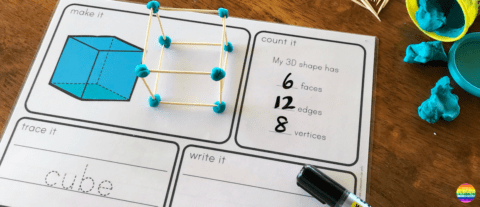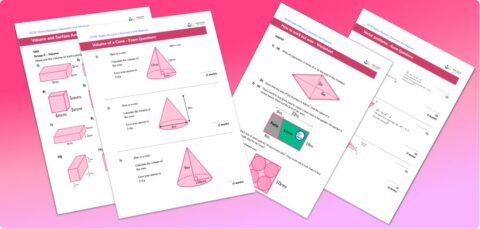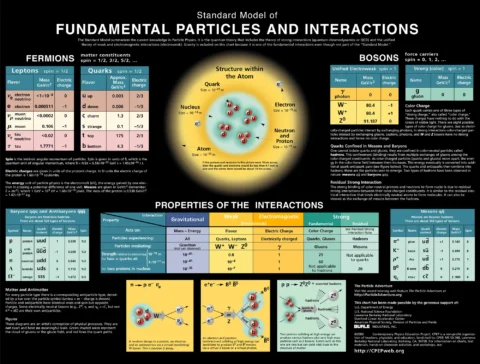1. Introduction
Fractions and decimals are two common ways of representing non-integer numbers. Understanding how to convert between fractions and decimals, as well as performing operations with them, is essential for many areas of mathematics. In these notes, we cover the basic definitions, conversion methods, and operations, along with 50 examples (with solutions) to illustrate the concepts.
2. Basic Definitions
Fractions
A fraction represents a part of a whole and is written in the form:
where a is the numerator and b is the denominator.
Decimals
A decimal is another way of expressing fractions, particularly those with denominators that are powers of 10. For example:
represents the fraction 75100, which can be simplified to 34.
3. Converting Between Fractions and Decimals
Fraction to Decimal
To convert a fraction to a decimal, divide the numerator by the denominator.
Decimal to Fraction
To convert a decimal to a fraction, write the decimal over the appropriate power of 10 and then simplify.
4. Operations with Fractions and Decimals
Operations with Fractions
Addition/Subtraction: Find a common denominator, convert fractions, and then add/subtract.
Multiplication: Multiply the numerators and denominators:
Division: Multiply by the reciprocal:
Operations with Decimals
Operations with decimals are similar to whole numbers, but it is important to align the decimal points for addition and subtraction. Multiplication and division follow similar rules to whole numbers, with adjustments for the decimal places.
5. 50 Examples with Solutions
-
Converting Fraction to Decimal
Convert 12 to a decimal.
Solution: 12 = 1 ÷ 2 = 0.5 -
Converting Fraction to Decimal
Convert 34 to a decimal.
Solution: 34 = 3 ÷ 4 = 0.75 -
Converting Fraction to Decimal
Convert 14 to a decimal.
Solution: 14 = 1 ÷ 4 = 0.25 -
Converting Fraction to Decimal
Convert 25 to a decimal.
Solution: 25 = 2 ÷ 5 = 0.4 -
Converting Fraction to Decimal
Convert 35 to a decimal.
Solution: 35 = 3 ÷ 5 = 0.6 -
Converting Fraction to Decimal
Convert 18 to a decimal.
Solution: 18 = 1 ÷ 8 = 0.125 -
Converting Fraction to Decimal
Convert 38 to a decimal.
Solution: 38 = 3 ÷ 8 = 0.375 -
Converting Fraction to Decimal
Convert 58 to a decimal.
Solution: 58 = 5 ÷ 8 = 0.625 -
Converting Fraction to Decimal
Convert 78 to a decimal.
Solution: 78 = 7 ÷ 8 = 0.875 -
Converting Fraction to Decimal
Convert 110 to a decimal.
Solution: 110 = 1 ÷ 10 = 0.1 -
Converting Fraction to Decimal
Convert 310 to a decimal.
Solution: 310 = 3 ÷ 10 = 0.3 -
Converting Fraction to Decimal
Convert 710 to a decimal.
Solution: 710 = 7 ÷ 10 = 0.7 -
Adding Fractions
Compute 12 + 14.
Solution: Find a common denominator: 12 = 24, so 24 + 14 = 34. In decimal, 34 = 0.75. -
Subtracting Fractions
Compute 34 - 12.
Solution: 34 - 24 = 14 = 0.25. -
Multiplying Fractions
Compute 12 × 23.
Solution: 1 × 22 × 3 = 26 = 13 ≈ 0.333. -
Dividing Fractions
Compute 34 ÷ 12.
Solution: Multiply by the reciprocal: 34 × 21 = 64 = 32 = 1.5. -
Simplifying a Fraction
Simplify 812.
Solution: Divide numerator and denominator by 4: 8÷412÷4 = 23 ≈ 0.667. -
Converting a Repeating Decimal to Fraction
Express 0.3 as a fraction.
Solution: 0.3 = 13. -
Converting a Repeating Decimal to Fraction
Express 0.6 as a fraction.
Solution: 0.6 = 23. -
Adding Fractions with Different Denominators
Compute 13 + 14.
Solution: Common denominator is 12: 412 + 312 = 712 ≈ 0.5833. -
Multiplying Mixed Numbers
Compute 112 × 213.
Solution: Convert to improper fractions: 32 × 73 = 216 = 3.5. -
Converting a Decimal to a Fraction
Convert 0.125 to a fraction.
Solution: 0.125 = 1251000 = 18. -
Multiplying Decimals
Compute 0.25 × 0.4.
Solution: 0.25 × 0.4 = 0.1. -
Converting a Decimal to a Simplified Fraction
Convert 0.625 to a fraction.
Solution: 0.625 = 6251000 = 58.
6. Summary
In these notes, we reviewed the definitions of fractions and decimals, learned how to convert between the two, and performed various operations such as addition, subtraction, multiplication, and division. The examples provided illustrate a wide range of conversions and operations, ensuring a thorough understanding of fractions and decimals.



